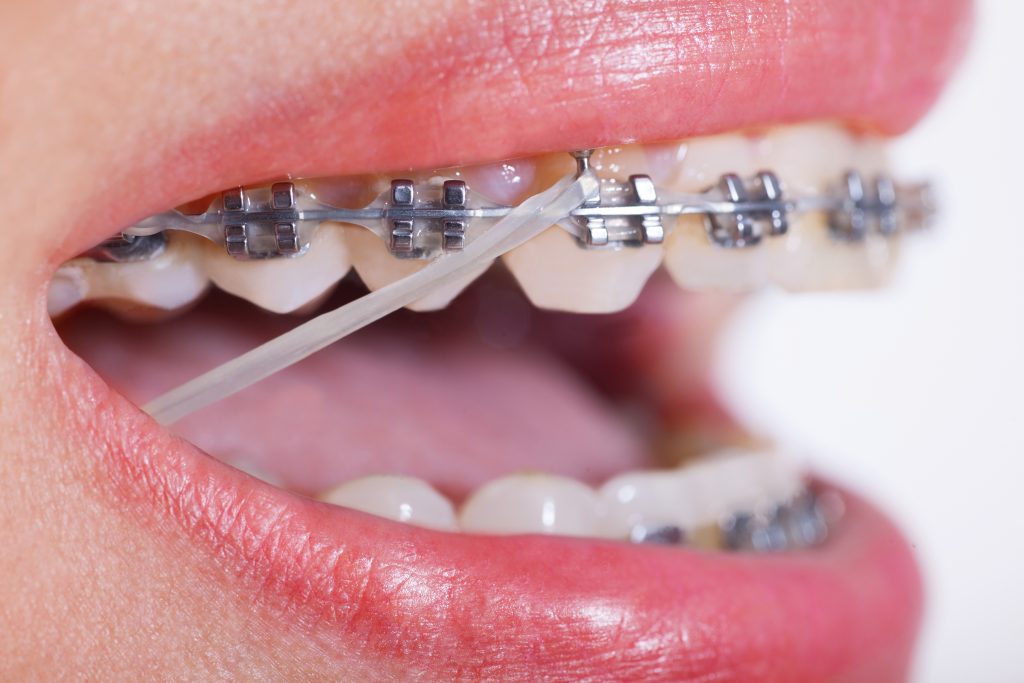
What is the process of getting braces put on?
Jul 25, 2020 · And another one! Braces 101 with Dr. Williams on today's episode he put some braces on! 🥰 Join the family – http://bit.ly/mytoothtime_youtube🦷 ToothTime F...
Why do my teeth hurt when I have braces?
Feb 08, 2019 · To attach the brackets, the orthodontist places a small amount of glue in the center of each tooth. Then they shine a blue light on your teeth to set the glue. The glue usually tastes bad but it...
How do you put braces on your teeth?
Does it hurt to get braces?

Is it painful to put braces?
The honest answer is that braces do not hurt at all when they are applied to the teeth, so there is no reason to be anxious about the placement appointment. There will be mild soreness or discomfort after the orthodontic wire is engaged into the newly placed brackets, which may last for a few days to a week.
How do they put on braces step by step?
1:059:02Putting Braces on - YouTubeYouTubeStart of suggested clipEnd of suggested clipWe call them brackets. Each have a little bit of glue on them and we put them on the tooth just likeMoreWe call them brackets. Each have a little bit of glue on them and we put them on the tooth just like you'd put a sticker on something. So you put them on just like a sticker.
How long does the dentist take to put on braces?
For most patients, getting braces put on takes about 1-2 hours. The process may seem a little unpleasant, but you shouldn't worry about pain. First, the dentist will clean and dry your teeth; then he or she will apply a special glue that holds the brackets on.
Do they put you to sleep for braces?
Dental Sedation for Braces Dental sedation can help ease any feelings of nervousness you have about getting braces. There are a few different types of sedation available, including nitrous oxide or laughing gas and IV sedation. These types of sedation offer varying amounts of relief from anxiety.Jun 29, 2020
What are the 5 stages of braces?
Five Stages of an Orthodontic TreatmentConsultation Stage. ... Bonding/Banding Stage. ... Regular Adjustments Stage. ... Debanding Stage. ... Retainer Stage. ... If you are currently suffering from any of the cases mentioned earlier, your dentist will most certainly refer you to an orthodontist.Nov 4, 2014
What color is best for braces?
Choose The Best Colors For Your BracesChoose gold, dark blue, pink, orange, turquoise, green, or violet to complement darker skin tones.Choose light blue, bronze, dark purple or subdued reds and pinks to complement lighter skin tones.Choose darker colors to make your teeth appear whiter.More items...•Mar 21, 2022
What is the best age for braces?
The ideal age for braces Early adolescence, or between the ages of 10 and 14, is widely considered the ideal time to get braces. That's because preteens and younger teens have all (or nearly all) of their adult teeth in place, and their softer jawbone tissue is still quite responsive to repositioning.Feb 24, 2020
Do braces change your face?
Yes, undergoing orthodontic treatment can bring changes to a person's face. Don't worry though – the changes that braces will make are purely positive! Braces will fix alignment issues with your face and give you a more symmetrical, natural look to both your mouth and your jawline.Feb 28, 2018
What are the side effects of braces?
You might notice the following side effects while wearing braces that aren't cause for concern:Changes to your speech.Gum and tongue irritation.Difficulty eating.Slight discomfort.Tooth decay.Inflamed gums.May 9, 2020
What food can you not eat with braces?
Foods to avoid with braces:Chewy foods — bagels, licorice.Crunchy foods — popcorn, chips, ice.Sticky foods — caramel candies, chewing gum.Hard foods — nuts, hard candies.Foods that require biting into — corn on the cob, apples, carrots.
How long does it take to get used to braces?
This process takes anywhere from one to two hours, leaving the rest of the day for you to rest and get used to your new braces. Here are some tips to help your first days with braces be more comfortable:
What kind of brackets do you get for a child?
Based on what you or your child has decided, you will either receive metal brackets or clear ceramic brackets. These ensure that the wires on your teeth stay in place.
How long does it take to get braces on?
Getting your braces on takes one to two hours. Depending on your teeth and the kind of braces you’re going to wear, the process for putting them on could happen in one appointment or two.
Where are lingual braces applied?
Lingual braces have many of the same components as conventional braces, but they are applied to the back of the teeth, on the “tongue side” of the mouth, instead of the front of the teeth.
What to eat with braces?
For as long as you have braces, you will also want to avoid foods that could pop off your brackets. The American Dental Association (ADA) recommends you stay away from eating hard, chewy, and sticky foods such as: 1 nuts 2 popcorn 3 corn on the cob 4 ice 5 hard candy 6 chewing gum 7 caramels
When to put rubber bands on back teeth?
If your back teeth are very close together, your dentist might put spacers or rubber bands between them about a week before your braces are applied. This step is to create enough space for bands to fit around your back teeth.
How to stop braces from hurting?
For the first few days after you get your braces put on or adjusted, eat soft foods to minimize pain from chewing. These foods should be easy to eat: You may also have sore places in your mouth where the brackets or wires rub against the insides of your cheeks.
What is the best pain reliever for toothache?
You could try an over-the-counter (OTC) pain medicine like ibuprofen ( Advil), naproxen (Aleve), or acetaminophen (Tylenol) to ease the pain. You could also try an oral anesthetic like Orajel or Anbesol to numb the area. Shop for dental pain relief. Foods to eat the first few days.
